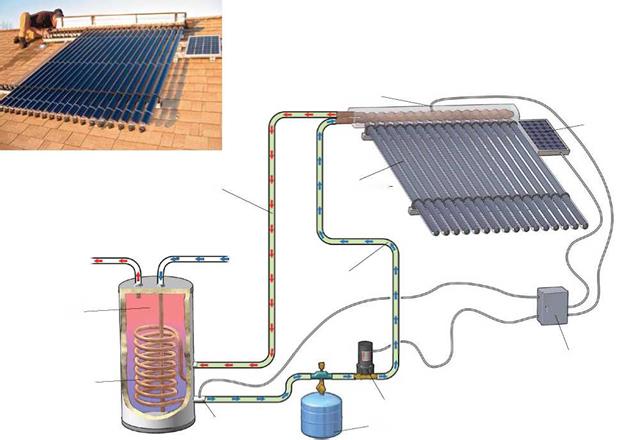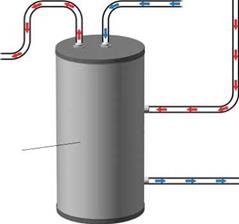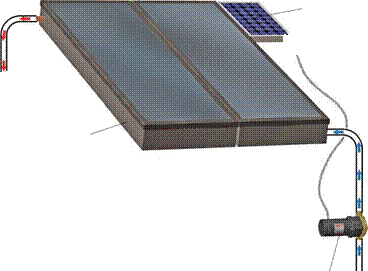To design, and then to maintain
Planning for the maintenance of an engineering structure as an integral part of its design has become routine in modern practice. Yet, by necessity, this preoccupation was also present in numerous ancient projects. For example planning of the irrigation system of Sechuan, with its intake at Dujiangyang, obviously took into account the need to clean the intakes and to maintain the dikes and the intake control mechanisms. The designers also anticipate the need for a procedure to dewater the works for maintenance during low-flow periods. Canal cleaning was a continuous activity in the old land of Sumer. From the archives of Mari, we know that these maintenance efforts were tedious and
|
Table 10.1 The oldest known dams |
|||||||
|
Name |
Region |
Probable Date |
Ht. (m) |
Len. (m) |
Type |
Water Course |
Purpose |
|
Jawa |
Djebel el- Arab (Jordan) |
3000 BC or earlier |
5.5 |
80 |
Fill between stone walls (Fig 2.5) |
Derivation canal from the wadi Rajil |
Floodwater storage (Fig 2.7). The oldest known dam. |
|
Khirbet el – Umbashi |
Djebel el – Arab (Syria) |
3000 BC |
7 |
40 |
Earth dam |
Wadi el – Umbashi |
Reservoir in the bed of the wadi itself (Fig 2.8) |
|
Sadd el – Kafara |
Egypt(near Memphis) |
2650 BC |
14 |
113 |
Fill between two rock faces |
Wadi Garawi |
Protection against floods of the wadi Garawi. The first known large dam (Fig 3.3, 3.3a) |
|
Weir of Khanouqa |
Middle Euphrates (Syria) |
1800 BC? |
Rocks (uncut basalt blocks) |
Euphrates |
Weir on the Euphrates, headworks of the “Semiramis canal” (Fig 2.13) |
||
|
Boedria |
Copai’de (Greece) |
1300 BC |
2 |
1250 |
Fill between two walls |
Kephissos |
Reservoir (Fig 4.6). See other dams, table 4.1 |
|
Kofini |
Tiryns (Greece) |
1200 BC |
10 |
100 |
Fill between two rock walls |
Lakissa |
Rerouting of a river, flood protection (Fig 4.12, 4.13) |
|
Lake Rusa (north) |
Urartu (Armenia) |
720 BC |
15 |
75 |
? |
Lake Rusa |
Reservoir: lake Rusa (Fig 2.18). In service until 1861 AD, then rebuilt in 1952. |
|
Lake Rusa (south) |
Urartu (Armenia) |
720 BC |
7 |
60 |
? |
Lake Rusa |
Reservoir; lake Rusa (Fig 2.18) |
|
Weir of Ajileh |
Assyria (Iraq) |
694 BC |
3 |
230 |
Large blocks of cut stone |
Khosr |
Weir on the Khosr, headworks of a derivation canal of the Khosr to Nineveh |
|
Bavian |
Assyria (Iraq) |
690 BC |
? |
? |
Gomel |
Weir on the Gomel, headworks of the Sennacherib canal |
|
|
Shaobei, or Anfengtang |
Anhui (China) |
585 BC |
11 |
Earth, straw and wooden stakes |
Tributaries of the Huai |
Reservoir; still in service today |
|
|
Maryab |
Yemen |
510 BC |
15 |
650 |
Earthen dike, rock protection |
Wadi Dhana |
Intake works for two canals conveying flood waters of the wadi (Fig 3.12). Breached in the 7th century AD. |
|
Panda |
Sri Lanka (Ceylon) |
370 BC |
7 |
2,600 |
Earthen dike |
Seasonal reservoir |
|
|
Bassawak, Tissa |
Sri Lanka (Ceylon) |
300 BC |
8 |
1,800 3,300 |
Earthen dikes |
Reservoirs (Fig 7.3) |
|
|
Paskanda |
Sri Lanka (Ceylon) |
300 BC |
17 |
? |
Earthen dike |
Seasonal reservoir |
|
|
Mala’a (lake Moeris) |
Fayoum (Egypt) |
250 BC |
7 |
8,000 |
Masonry |
Joseph canal |
Reservoir (lake Moeris) fed by flood – waters of the Nile (Fig 3.6). In use until the 18th century AD. |
N. B. Two other dams, whose conditions were known in the Roman period, are candidates for being even older: the dam of the wadi el-Souab, a possible headworks on an irrigation canal of the ancient Mari (Fig 2.11), and the dam of the lake of Homs (Fig 6.33).
sometimes difficult. The ports of Pylos in the IIIrd millennium BC, and the port of Rome built by Trajan, are examples of projects designed from the beginning to use the flow of the river to keep the entrances open. Of course any project subject to sediment deposition or erosion can quickly be rendered useless due to lack of maintenance. This is why the reclaimed land of Mesopotamia lapsed back into desert so quickly after the Mongol invasions of the 13th century. Another example is that marshes quickly reappear as soon as the Etruscan know-how in lowland drainage is lost in Italy.








 Scott Gibson, a contributing editor to Fine Homebuilding, lives in East Waterboro, Maine.
Scott Gibson, a contributing editor to Fine Homebuilding, lives in East Waterboro, Maine.








 Once you remove the inspection cover of a septic tank, look at the inlet pipe. It should be coming into the tank with a slight downward pitch. If the pipe is pointing upward, it indicates improper grading and a probable cause for stoppages. If the inlet pipe either doesn’t exist or is partially pulled out of the tank, there’s a very good chance that you have found the cause of your backup.
Once you remove the inspection cover of a septic tank, look at the inlet pipe. It should be coming into the tank with a slight downward pitch. If the pipe is pointing upward, it indicates improper grading and a probable cause for stoppages. If the inlet pipe either doesn’t exist or is partially pulled out of the tank, there’s a very good chance that you have found the cause of your backup.